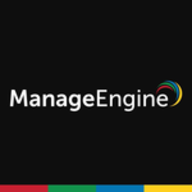

In the competitive landscape of endpoint management, ManageEngine Endpoint Central and Microsoft Intune both present robust solutions. ManageEngine Endpoint Central has an edge in broader endpoint management across diverse operating systems, while Microsoft Intune is particularly advantageous for organizations heavily invested in Microsoft products.
Features: ManageEngine Endpoint Central excels in software deployment, asset management, and is particularly strong in patch management. Its ability to manage various endpoints, including Windows, macOS, and Linux, is noteworthy. It offers remote control and detailed reporting capabilities. Microsoft Intune is recognized for its seamless integration with the Microsoft ecosystem, providing robust mobile device management. It enhances organizational security with conditional access policies and extends capabilities with Office 365 and Azure. However, Intune's third-party application patching isn't as comprehensive as ManageEngine's.
Room for Improvement: ManageEngine Endpoint Central could benefit from better integration for non-Windows systems like Linux and macOS. Users also seek improved reporting features and a more streamlined patch management process. Microsoft Intune users cite its complexity and the need for improved support on non-Microsoft platforms. Its mobile management and reporting features could be enhanced, and it faces challenges in third-party application delivery and integration.
Ease of Deployment and Customer Service: ManageEngine Endpoint Central offers strong on-premise deployment support while accommodating hybrid environments. Microsoft Intune primarily operates in cloud-based setups, suiting organizations aiming for minimal on-premise infrastructure. ManageEngine's customer service is often praised for its responsiveness, though sometimes hampered by language barriers. Microsoft Intune's support is viewed as adequate but occasionally lacks responsiveness.
Pricing and ROI: ManageEngine Endpoint Central is often seen as cost-effective, especially for smaller organizations, despite additional costs for certain features. Microsoft Intune benefits from being part of Microsoft's bundled offerings, which can reduce costs but may become expensive as a standalone product. Both offer a solid ROI by automating tasks and freeing up human resources, aligning more closely with specific infrastructural needs and ecosystem integration.
Everything we've gained from it makes my job easier day after day, and I see value in it as an engineer.
Microsoft Intune not only saves costs by reducing the number of personnel needed but also offers a comprehensive solution for managing laptops, applications, security, individual access, and enrollment.
Importantly, when someone leaves the company, it helps protect document access on their devices.
The support team is available via chat and will create a ticket if they're not available, providing assistance even for small issues.
While they are generally good, there could be improvements in their response times to align with our SLAs.
When a support ticket is submitted, it directly reaches someone with Intune support expertise.
When I contacted Microsoft, they had the same expertise, if not more, which is phenomenal because I felt heard and my problem was solved.
Sometimes, the support provided is excellent, and the representative is knowledgeable, while other times, the service needs improvement.
The scalability of Microsoft Intune is ten out of ten.
Ideally, we want to automatically segregate devices based on user properties like primary use, but currently, dynamic groups seem limited to device properties.
It supports organizations with 200 endpoints and those with more than 15,000 endpoints.
ManageEngine prefers not to display any information if it cannot be properly gathered.
The product is very stable, especially with the cloud version.
We haven't encountered issues very frequently.
We have not experienced downtime, bugs, or glitches.
It appears Microsoft Intune undergoes changes without informing customers.
Microsoft Intune has been very stable.
It would be great if there was a smarter solution to address this issue.
Endpoint Central does not support Linux, which makes it challenging to patch Linux machines using commands.
The patch management module could be simplified as it is currently a bit complicated.
Features like unlocking devices sometimes fail, and the support offered for other operating systems is insufficient.
There are communication issues, so you might start working with a feature without knowing if it will be deprecated six months from now.
Many third-party companies offer single-pane-of-glass reporting that shows you what your update environment looks like, how your patch is doing, application status, etc., but Intune's reporting is not intuitive.
ManageEngine products offer reasonable prices for their product quality.
The pricing is cheaper compared to other MDM products.
The pricing of ManageEngine Endpoint Central is quite decent.
Introductory professional services, like a fast-track service, were included with our E5 membership, and there have been no additional costs.
The Intune suite and add-ons, such as batch management and remote help, are costly.
It costs approximately forty euros per user per month.
ManageEngine Endpoint Central is straightforward to use and implement.
ManageEngine Endpoint Central has significantly simplified my device management practices.
The GUI of Endpoint Central is very user-friendly, which simplifies the process of training new users.
Intune excels in configuration and compliance management for Windows 10, ensuring devices receive timely updates and adhere to organizational standards.
Dynamic groups allow us to set conditions for automatic membership, eliminating the need for user intervention or manual review and ensuring a seamless workflow.
Windows Autopatch is the most valuable because it removes the burden of patch management.
| Product | Market Share (%) |
|---|---|
| Microsoft Intune | 31.0% |
| ManageEngine Endpoint Central | 10.1% |
| Other | 58.9% |


| Company Size | Count |
|---|---|
| Small Business | 25 |
| Midsize Enterprise | 14 |
| Large Enterprise | 35 |
| Company Size | Count |
|---|---|
| Small Business | 116 |
| Midsize Enterprise | 46 |
| Large Enterprise | 152 |
ManageEngine Endpoint Central is a unified endpoint management (UEM) solution offered by ManageEngine, a division of Zoho Corporation. It is designed to help organizations efficiently manage and secure their endpoints from a centralized platform. Endpoint Central provides a comprehensive set of features and capabilities to streamline endpoint management and enhance security across diverse devices and operating systems.
ManageEngine Endpoint Central Features:
ManageEngine Endpoint Central Benefits:
Reviews from Real Users
PeerSpot user, Sr Engineer Administrator at a university, says that "Its cross-platform capabilities and the ability to do both OS-level patching and third-party patching are valuable. It is difficult to find a software product that will do all that for you out of the box, and you don't have to do any configuration other than your initial setup. Once you do that, there is a very minimalistic approach to getting it operational. You can have it up and running within a 20-minute time span."
Park Armstrong, Chief Technical and Solution Architect at Vertigo Inc., writes that ManageEngine Endpoint Central is “Helpful for identifying and filling the gaps and meeting compliance needs, but each of their product works as an independent product and lacks integration”.
Microsoft Intune provides centralized management of mobile devices and applications, ensuring security, compliance, and productivity through integration with Microsoft services like Microsoft 365 and Azure Active Directory.
Organizations use Intune for managing mobile devices and applications, enhancing security and compliance across platforms. With features like single sign-on, conditional access, and zero-touch deployment via Autopilot, it facilitates efficient operations. Intune's scalability, easy enrollment, and capabilities such as remote wipe support diverse device management, offering robust data protection and efficient operation. Despite its features, improvement areas include reporting, compatibility with non-Microsoft devices, and better support for macOS and Linux devices.
What are the key features of Microsoft Intune?
What benefits should users look for in reviews?
In industries such as finance, healthcare, and education, Microsoft Intune is implemented to ensure secure and compliant device management. Companies leverage its capabilities to deploy security policies and manage both corporate-owned and BYOD environments, facilitating a unified approach to data protection and compliance.
We monitor all Unified Endpoint Management (UEM) reviews to prevent fraudulent reviews and keep review quality high. We do not post reviews by company employees or direct competitors. We validate each review for authenticity via cross-reference with LinkedIn, and personal follow-up with the reviewer when necessary.